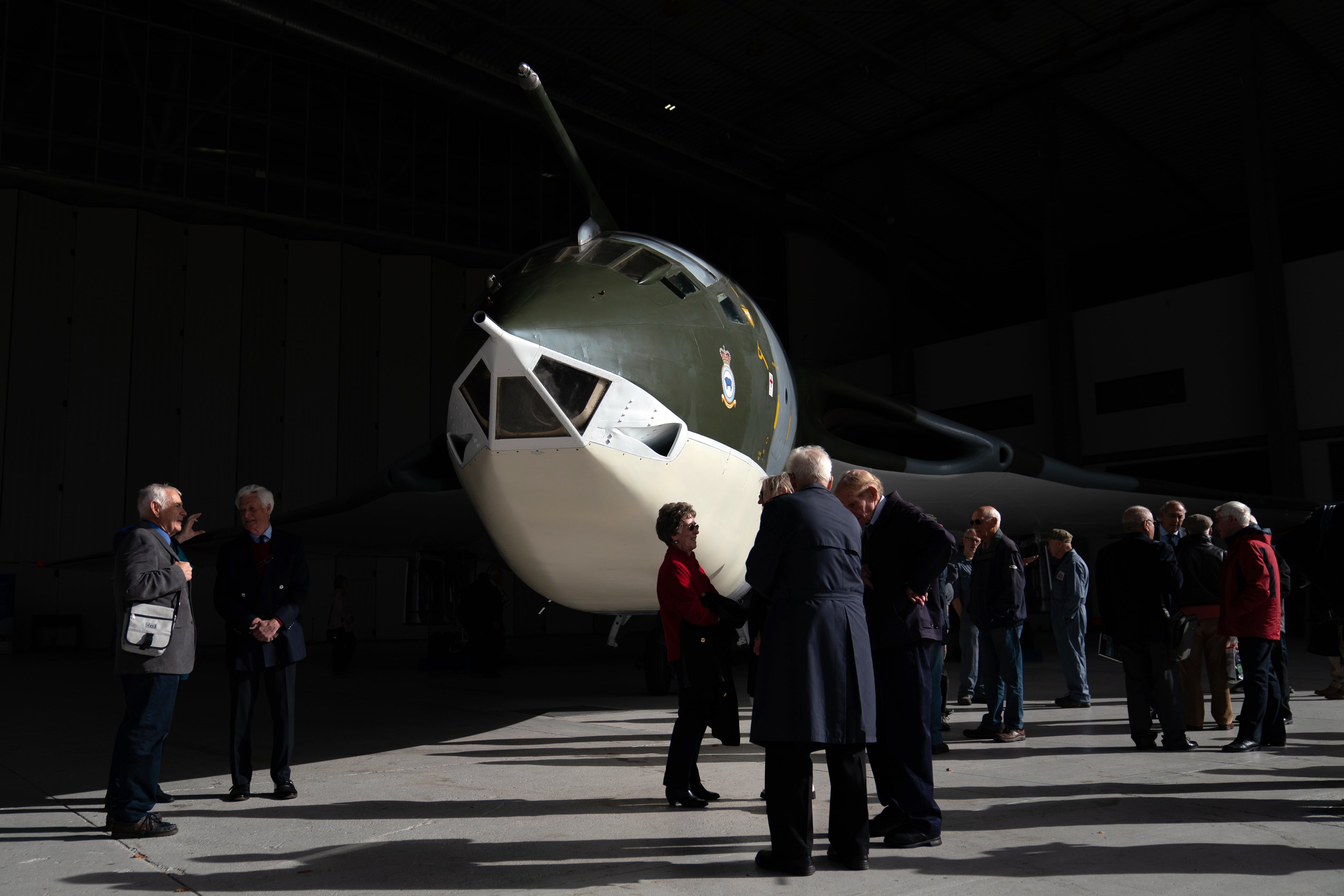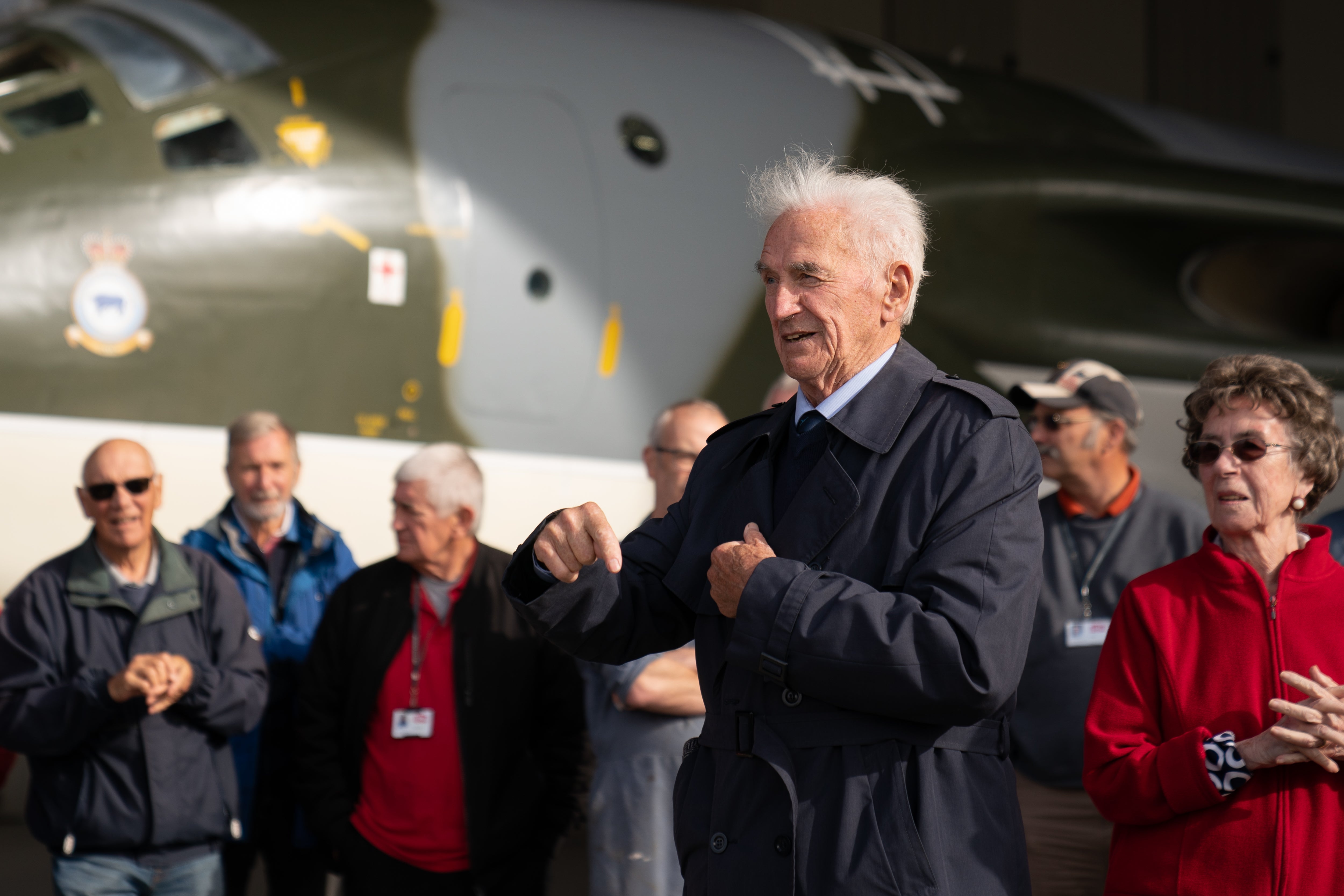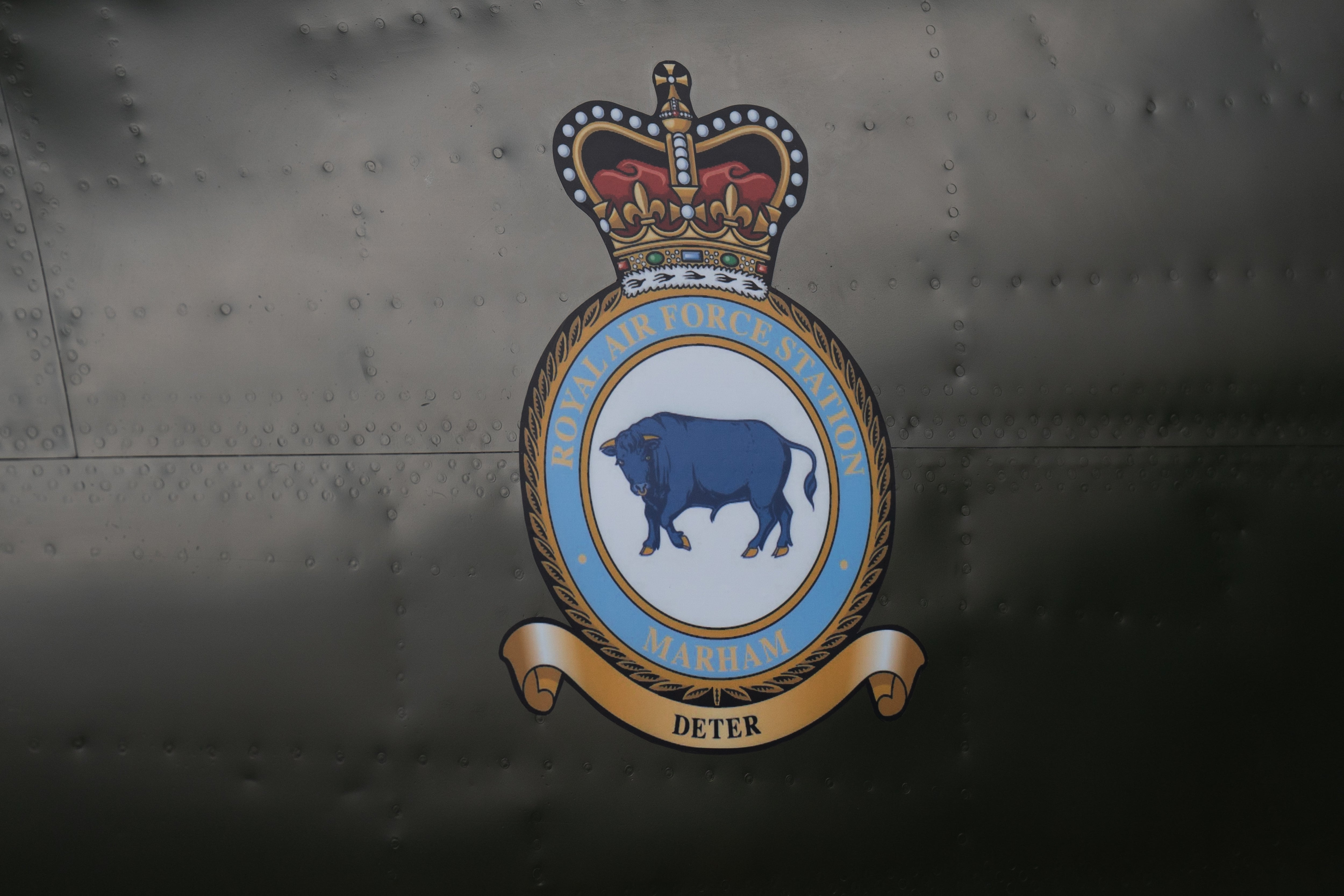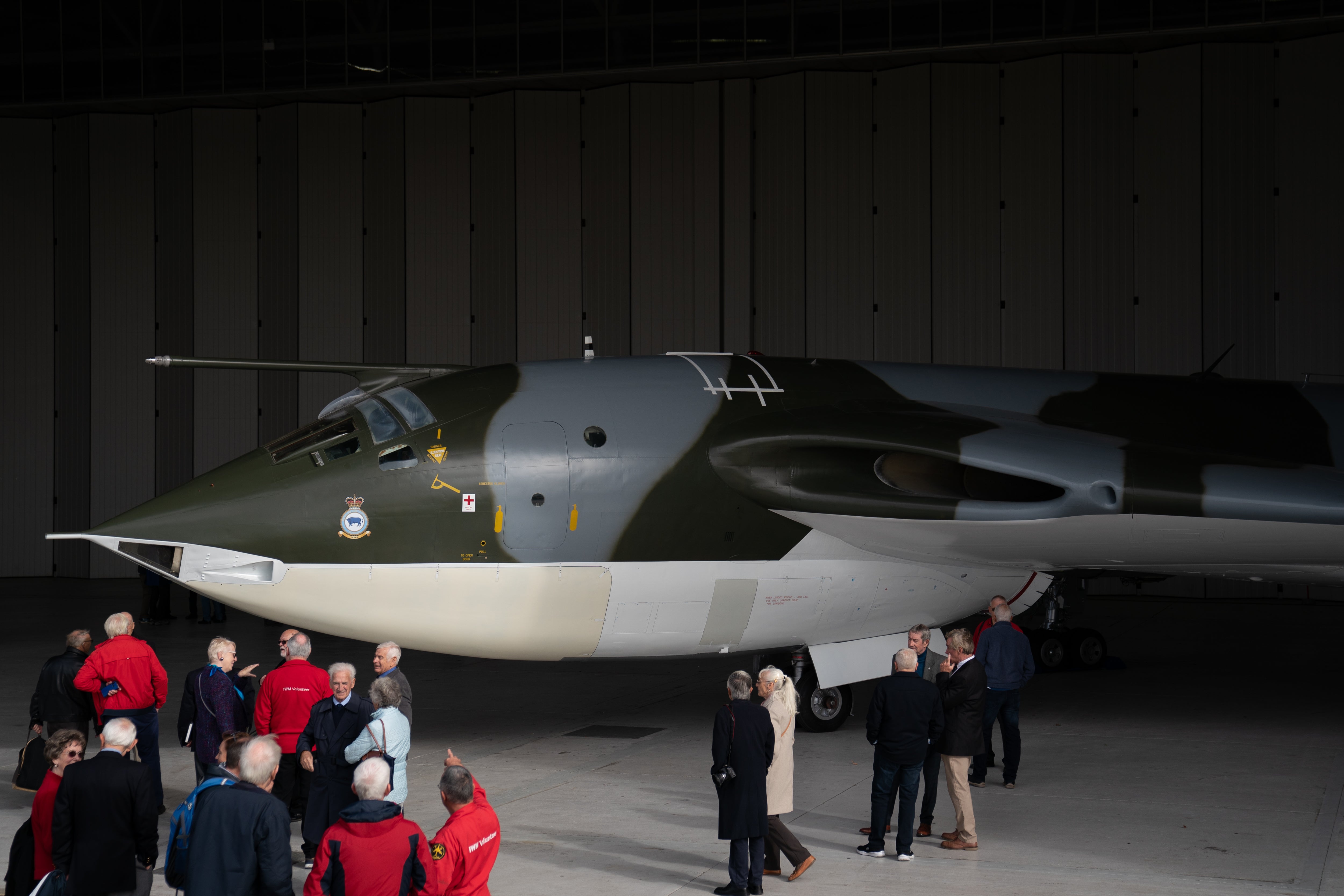Plane that formed part of UK’s Cold War nuclear deterrent goes on display
Handley Page Victor is only surviving aircraft of its type

A plane that was once capable of carrying a nuclear bomb as a deterrent during the Cold War has gone on display.
The 110-foot wingspan Handley Page Victor is the only surviving aircraft of its type, having taken its first flight in 1959.
The plane, which took five years to restore, served initially as a bomber and later as a tanker before it was acquired by IWM Duxford in 1976 on its retirement from service.
Squadron leader Garden ‘Gary’ West flew the plane both as a bomber and as a tanker during his RAF career and recalled its nuclear deterrent role.
“All through the Cold War we were there to go if necessary,” he said. “But we didn’t go, so we won from that point of view.

“We did exactly what we were there for. We didn’t have to go, happily.”
The 83-year-old, who lives near Oakham in Rutland, said: “I think the memories really were just the excitement of flying a big aeroplane as I came straight from training onto Victors.
“This particular mark of aircraft was very good.
“Bit limited on take-off because the engines were elderly and not really powerful enough but we managed to do it and could take off with full fuel on board and a bomb if we had to.
We could carry thirty-five 1,000lb bombs which was quite a lot more than the other V bombers could.

“It’s the sort of thing that we did practice a little bit.
“We had the nuclear weapon during the cold war and that’s what we were here for.
“It wasn’t so much fun, but it was fun later when it became tanking and we could do air Victor to Victor tanking as well which was quite fun.”
He described the restoration as “fantastic”, adding: “I’m thrilled to bits to see it again like this.
“It’s the only one left. It means a lot to us.”

Former Group Captain Alistair Sutherland recalled serving as a navigator on the plane.
The 89-year-old, of Fakenham in Norfolk, said there would be two navigators and an electronics officer in the back of the plane, and a pilot and co-pilot at the front.
“It was very cramped but you were all pretty busy so it worked out pretty well and we were all friends and especially if you went overseas we had some good nights abroad,” he said.
Jon White, head of conservation at IWM Duxford, said the restored Handley Page Victor XH648 was “the only one”.
“There were only ever six of this particular one made and this is the last surviving one,” he said.
“That’s why the museum has spent such a long time of it.

“It’s a totally unique aircraft and shows a really interesting part of British aviation history.
“It was one of three aircraft designed to be Britain’s first nuclear bombers.
“It’s kind of an iconic aircraft for its shape, it was so futuristic and even now it does look futuristic for an aircraft.”
The five-year restoration project saw some parts removed altogether with new parts made to replace them, and was one of the largest projects ever undertaken by the museum.





